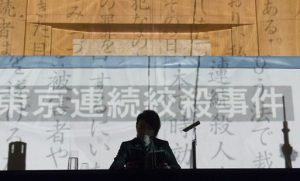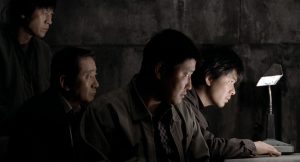The film is set in 2017, fifteen years after five cold-blooded murders shook the nation, with Masato Sonezaki releasing a book that details the specifics of each murder.
Whilst Memoirs of a Murderer touches upon interesting themes and has an unusual, unpredictable storyline, its plot does lack depth in places and is somewhat unrealistic. This said the film is still worth watching. So, this is your spoiler alert; big reveals await below…
As the hype continues to develop around the case, Toshio Sendo, a journalist whose career was built upon his reports of the killings, and Police Detective Ko Takimura, whose sister X was killed by the ‘Strangler’ in an act of vengeance meet on live television to discuss the legitimacy of Masato Sonezaki’s claim to be the infamous murderer.



Confusion continues to develop as an anonymous source discounts Sonezaki’s claim, releasing footage that could only have been captured by the killer. After a dramatic, televised fight, it is revealed that both Masato Sonezaki and, (actually Takumi Onodera) were working together in a bid to provoke the killer, encouraging him to come forward.
Detective Ko Takimura wrote the book with information obtained from police reports, whilst Takumi Onodera, the fiancée to Takimuras’s murdered sister, underwent drastic cosmetic surgery to change his identity- later emerging as the ‘face’ of the killer (see what I meant about the unrealistic plot line?!).
After a series of additional plot twists and turns, Takumi Onodera uses his intuition and a (somewhat simplistic) understanding of PTSD to figure out the true identity of the murderer. So who? None other than Toshio Sendo, the journalist whose reputation and career are built upon his reports of the killings.
Just as the audience feels the film is tying up nicely (Sendo is convicted of murderer and incarcerated when it is revealed that the law of limitation was no longer in place at the time of the final murder), the closing scene reveals the vengeful act of the son of one of the victims, who attacks Sendo from inside the prison walls…
















































